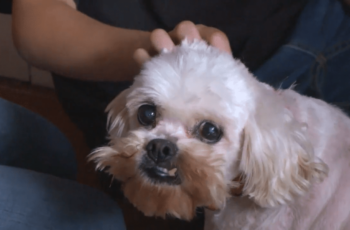Some dogs have a stronger need for constant companionship than others. This is especially true of breeds originally bred to work beside their human owners, such as herding or hunting dogs. Dogs with separation anxiety may bark, howl, chew furniture, urinate or defecate in the house and many other destructive behaviors when left alone for extended periods. However, it isn’t the dog’s fault- instead, they lack something that they are missing from their lives: company.
Bored dogs, don’t receive adequate attention or exercise may develop separation anxiety. It is important to note that dogs who are teething, sick, hurt, or recently adopted may also have this problem.
10 Signs of Separation Anxiety
1.Dog exhibits increased activity. Dog barks and howls more than usual.
2.Dog doesn’t listen to you or your family – you must have verbal command before guidance is required, e.g., “come” or “sit, sit down,” not “come” or “sit.” Finesse in training will be needed. For example, clicker training, food reward, praise, etc.
3.Dog follows you from room to room when you are home
4.Dog is destructive when left alone (chews up everything, including himself)
5.Dog drools excessively (just before you leave a particular place or at the point that you initiate separation).
6.Dog pants and salivates profusely while in the crate (the dog may look like he’s hyperventilating-this is normal but can be quite alarming.
7.Dog shakes excessively after being left alone (you may see the dog’s entire body vibrating)
8.Dog urinates or defecates in the house when left alone (there are two main accounts for this which we most often see with pit bulls- not all dogs will do this. You will have to draw your meaning from this. For example, the house has been in poor order. The dog has gone long periods without food. You will need to know this to work out the cause of putting the dog under this stress.
9.Dog may sleep excessively (dogs with separation anxiety often go long periods without sleeping).
10.If left alone, the dog is restless and may pace, bark or howl for hours on end, often chewing on his paws.
Your first step should be to consider your dog’s separation anxiety before considering any other potential causes.
To begin working on the issues your dog has, you must first find the cause of your dog’s anxiety. The following information will help you to determine this.
A Dog’s Anxiety
There are many reasons why your dog is anxious or stressed. However, as there are many different breeds of dogs with varying temperaments, it can be difficult to determine the reason for your dog’s anxiety.
For example, some dogs have separation anxiety because they were rescued from an abusive or unhappy life. This might be because the dog was neglected or abused. When he was rescued, he became reliant on you and his family for affection and love. Although he is now living a happy, healthy life, he may still suffer from separation anxiety when left alone in your absence.
Other dogs are uncomfortable being left alone at home; they have no experience with being left under supervision and feel anxious when out of sight.
You should also consider a dog’s age. Puppies may have to be left alone while you’re out at work, and so they will naturally feel anxious during this time. Some older dogs may suffer from loneliness due to your long working hours while they are left at home independently.
Whatever the cause of your dog’s separation anxiety, it is vital that you try to determine why he is acting the way he is before attempting to address it. When we are unable to identify the cause, it is harder to treat the problem.


